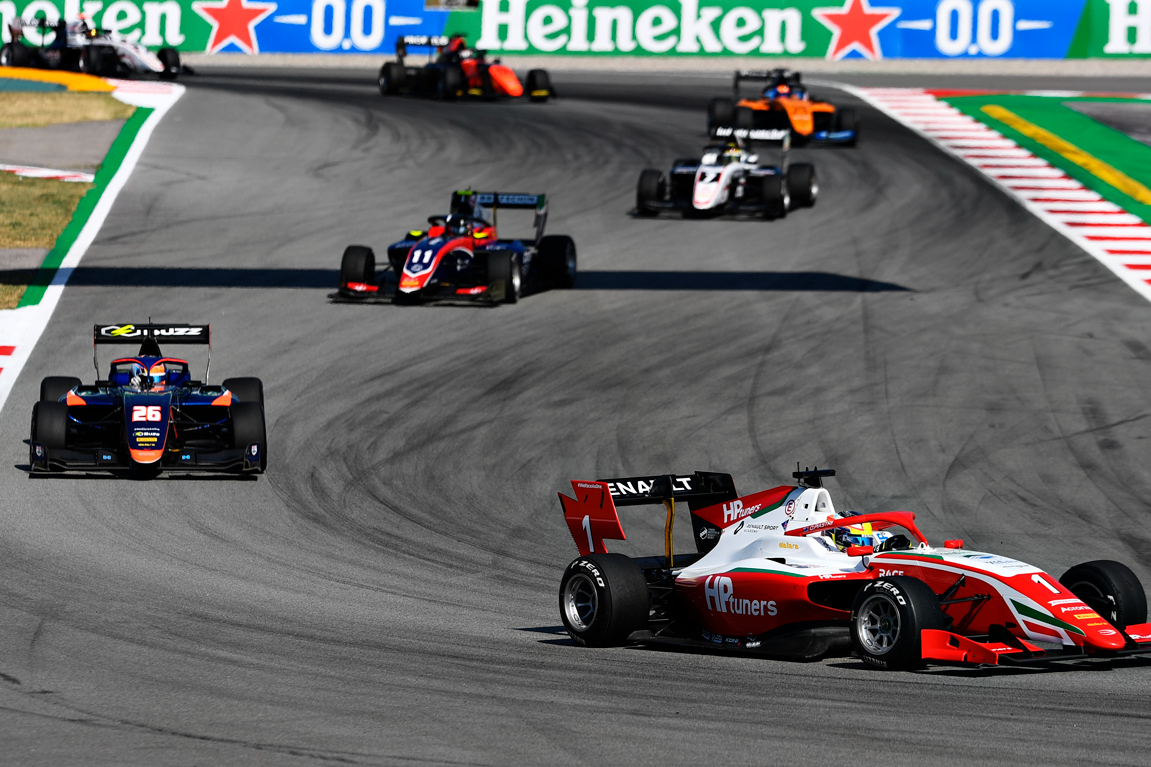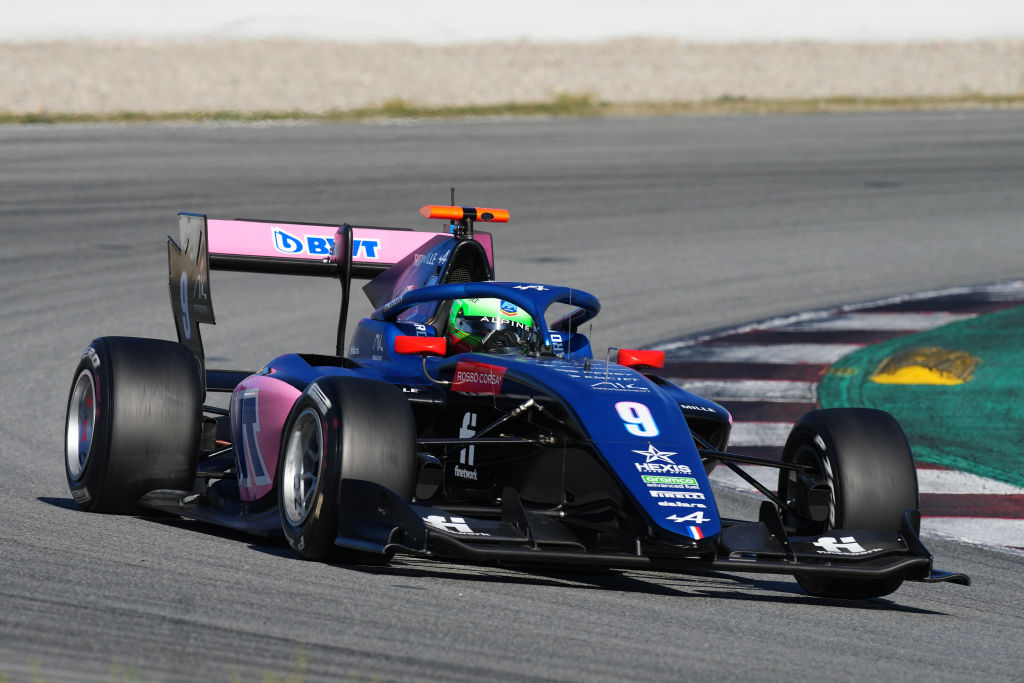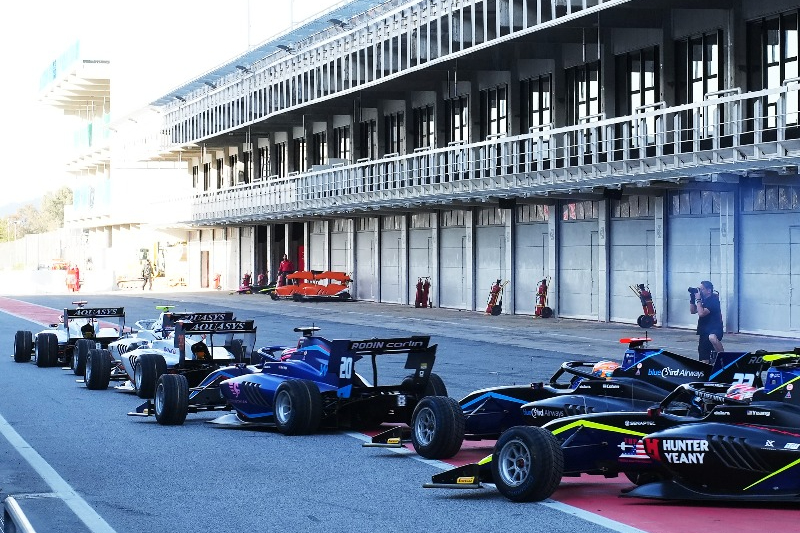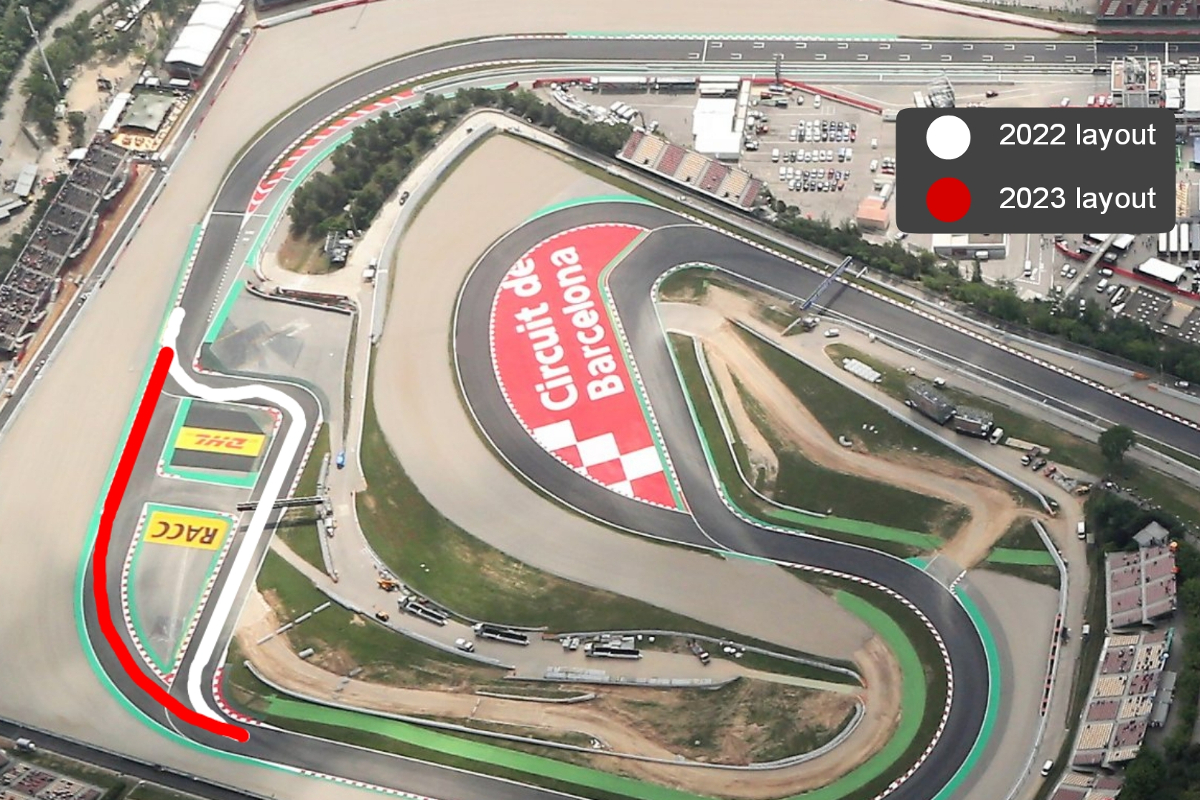
Photos: Formula Motorsport Ltd
The chicane at the end of the lap in Barcelona was introduced in 2007 to improve safety, and now F1 and its support series will race on a layout without it. But could a faster final sector actually be a safety gain too?
A lot of drivers and fans are looking forward to this weekend’s Spanish Grand Prix because the Barcelona circuit will, for the first time in 17 years, be used for Formula 1 without the slow chicane at the end of the lap that was introduced in 2007.
The final sector now has a far higher average speed as there’s a slightly longer run to the apex of the turn 13 right-hander and following that there’s a downhill straight heading towards the final corner, another right-hander, rather than the widely disliked chicane.
The chicane was added as a safety measure, but once the run-off beyond turn 13 was extended it made it possible for single-seaters to return to the faster pre-2007 version of the corner and after several years of pressure from various parties that has now finally become a reality.
It’s logical to assume that, to a degree, removing a part of the lap that was designed to be a safer alternative than having two back-to-back high-speed right-handers will reduce the safety of the final sector for this weekend. But with FIA Formula 3’s 30-car field of young drivers, having a faster end to the lap may actually make it safer when everyone’s on track.
Formula Scout spoke to several of the drivers to get an idea of what they are expecting from the revised circuit layout, and started by bringing in feedback already amassed from speaking to the stars of Formula 1 and Formula 2.
Several of drivers in those series pointed out that the front-left tyre would be worked very hard in qualifying and especially the races due to the higher energy loads the final two corners now have. But with the lower cornering speeds of F3 cars, would tyre wear be as much an issue and would drivers have enough downforce to take both corners flat?

What traffic at the chicane used to look like
“It’s always exciting to have changes on very traditional tracks,” said Prema’s Mercedes-AMG F1 junior Paul Aron. “Barcelona is a track that a lot of us have spent the most time on, so it’s nice that there’s been a change.
“Firstly, on the comment that you made that corner speeds are lower. Still, the last corner is not flat for us. It’s a proper corner, we have to do a proper lift. So it’s not that easy, let’s say. And definitely also for us the tyre wear and the tyre management has probably shifted more towards managing the fronts than the rears.
“As now the slow speeds, traction zones of sector three have been changed to more high speed lateral forces, that will definitely have a bigger toll on the front tyres, especially the front-left. So I think that we can expect for the races, but we can never be too sure and I guess we’re going into the race weekend a bit blind.
“But that’s what the sprint race is for and hopefully we do a good job in qualifying. We have the sprint race to kind of dial in the set-up for the feature which is on Sunday.”
MP Motorsport’s Jonny Edgar added: “It’s nice to have a change on the track. The last corner now is pretty quick, but it’s still quite a big lift. I think it’s one of the quickest corners on the track, similar in turning speed to turn nine I think.
“For the race, I think what we had in testing was that whatever balance you start with, if you have a little bit of oversteer at the start, it just progressively gets worse and worse throughout the race. And then you have understeer, again it gets worse and worse. So if you can have a good balance with the car, it will make a big difference by the end because if you slide the front or the rear a bit too much at the start, it’ll just carry on getting worse.
“I think it’s pretty difficult from the set-up side, and then also the driving side to manage. I think it’ll be a little bit harder with the two quick corners now.”

Nikola Tsolov
ART Grand Prix’s Alpine junior Nikola Tsolov agreed with both of his rivals but expected not “too much change” in tyre degradation on qualifying runs, and also that in the races it “won’t be easy to manage because it’s quite easy to oversteer – I mean overturning the steering wheel” in anticipation of the tyre’s gripping power once it has done many laps.
The ‘new’ layout made its race return in a recent Formula Regional European Championship and F1 Academy meeting, with the former having a grid of 33 cars, and that highlighted the first safety concern. That wasn’t the high speed of turn 13, but actually the low speed of drivers through the final sector in practice and qualifying who were either on their way to the pits or on a cooldown lap before getting ready to attack again.
The drivers briefing at the start of the weekend was used in those series to talk about what was the safest way for drivers to lower their pace in the final sector, and the F3 drivers expect they’ll be discussing the same in their briefing today.
“We have a briefing later on where I think we will get a lot of information about this,” Aron said to Formula Scout. “Other than that, I think in the end, you have got to be sensible.
“From our side, I would be expecting that the main traffic jam will be from exit of turn nine until exit of turn 12. Because already from the exit of turn 12, you need to be accelerating to get up to speed. As obviously the last corner is super high speed and you want to have a good slingshot to the beginning of the lap.
“So I think the traffic will clear up at the exit of turn 12. But before that, there will probably be a traffic jam. So we’ll have to see how we can manage it. And I’m assuming from race control they will say that there is no slowing down allowed in the last sector on the track as drivers will be preparing the beginning of their push lap, and it could create a dangerous situation.
“About [entering] the pitlane, I don’t think it will be an issue. Actually, I think it was a bit more dangerous before with the chicane as the pitlane was straight away at the exit of the corner. So you had to go right quite quickly. Whereas now you can basically stay tight from the exit of turn 12 and it’s quite obvious that you are going to the pitlane.
 “So for me the pitlane will not be [an issue], and from race control, they will put in some some rules or let’s say ideas for us to avoid any penalties in the qualifying.”
“So for me the pitlane will not be [an issue], and from race control, they will put in some some rules or let’s say ideas for us to avoid any penalties in the qualifying.”
Tsolov agreed that “it’s probably easier to go in” to the pits now while being followed by another car through the final sector.
“[For] traffic, I think everything’s just going to be much earlier in the lap because you have to start preparing it earlier,” he added. “So the traffic jam will be from exit of turn nine, around there. And probably even in turn 13 it will still be some traffic I think, because there’s so many people that are going to be waiting.”
Edgar pointed out that while end-of-lap traffic may improve, qualifying in Barcelona usually means traffic elsewhere for F3.
“In terms of traffic, it’s normally more starting the lap here where it’s a problem because everyone tries to leave the pitlane at the same time to be in sequence,” he said.
“So I think starting the lap, there will be a lot of slowing down in the last sector. With the new layout, I’d expect the slowing down will be earlier, because from the exit of 12 you always want to be accelerating, just to prepare the lap and to carry some speed around the last two corners.
“[With] race control, in the last few years on tracks where traffic has been a problem, they normally don’t really put any rules because it’s hard to enforce. So they kind of normally leave it to the drivers to sort. But most of the time, people are pretty sensible and keep out of the way, especially in qualifying when people are normally on the same sequence.
“I’d say it’s more practice where you have problems. But again, it’s most people get out of the way and know how to manage it. Sometimes you get blocked, but I think with most people it’s just a mistake, like it can happen. I think everyone’s blocked someone before by accidents and been blocked, so I don’t think it will be too much of a problem.”
 The trio also shared their general feedback about the changed layout with the F3 media.
The trio also shared their general feedback about the changed layout with the F3 media.
“In terms of driving, it’s a bit nicer. It’s a quick section rather than the last chicane before was really slow,” said Edgar.
“I think in quali it wasn’t too bad, but especially in races when the tyres start to drop, I’d say it wasn’t the nicest to drive because you were kind of just waiting for the car. There wasn’t really anything you could do.
“But [for] racing, I’m not too sure because I think the last two corners, it will be pretty hard to follow closely. So it might be difficult to stay close, but then we will have a little bit more speed onto the straight, so then the DRS effect should be a little bit more. So I think it’ll be interesting to see because it’s hard to predict, and in tests I didn’t really get a chance to follow close.”
Despite “having the last corner with such high speed, it won’t be [easier] down the straight” to pass, reckons Tsolov.
“Unless someone gets like really big degradation and you manage to kind of stay close to them, and then just pass in the straight,” he explained. “Because in the end we don’t really go on the straight that much quicker than before. We’ll be two or three kilometres per hour more down the end of the straight.”
Aron was forthright that the “clunky, really tight corners” that the chicane consisted of “don’t really fit a single-seater”, and the higher speeds puts more onus on the aerodynamic abilities of the F3 car. He also echoed Edgar’s comments on how the balance of the car will now need to be different.
“I think it also equals out a bit more the degradation between the front and rear axle. Always on this track it’s just been the rear axle. Now it’s more if you’re struggling with one axle, that’s going to be the limiting factor. So in that side, I think it improves the racing.
“Overtaking-wise, I think it doesn’t change too much for us in F3. We’ve seen that the races here previously have still been very interesting because there is degradation, and obviously as we are young drivers, we are still learning how to manage it as best as possible. So there will be overtakes in the races, and I think the racing will be interesting for us.”